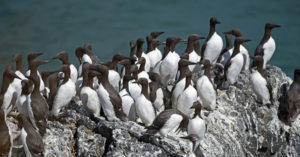Spencer Rearden, Manager, Yukon Delta National Wildlife Refuge
Kevin Whitworth, Executive Director, Kuskokwim River Inter-Tribal Fish Commission
This program was recorded on Tuesday, Nov. 18, 2025 at 5 pm Alaska Time
First it was the Chinook salmon that drastically declined in the Kuskokwim River. Then the chums and coho salmon followed with steep declines. This multi-year, multi-species salmon disaster was not just an ecological crisis for the Kuskokwim River drainages of the Yukon Delta National Wildlife Refuge but a significant humanitarian crisis for all the villages that depend on salmon for food security and cultural integrity. Come hear from Kevin Whitworth of the Kuskokwim River Inter-Tribal Fish Commission and Yukon Delta Refuge Manager Spencer Rearden about this crisis and how a unique partnership of local tribes and the refuge formed up to manage salmon on the river. They will address the current state of salmon and how we got here. How Tribes up and down the Kuskokwim came together to form the Inter-Tribal Fish Commission to attack this problem that threatened their way of life. And how the refuge came to co-manage a fishery with the Tribes, setting openings and closings for fish harvest, that under normal circumstances would be done by the Alaska Department of Fish and Game.
In villages along the Kuskokwim, salmon and subsistence are a way of life. Fish drying racks awaiting the return of the salmon. PC USFWS
Background
The Kuskokwim River is the second longest river in Alaska and home to all five species of Pacific salmon. Salmon are key to the wildlife and ecology of the 20 million-acre Yukon Delta National Wildlife Refuge, the largest refuge in the nation. Predators such as bears and eagles depend on the fish as do other fish species such as the record-sized rainbow trout, Dolly Varden and northern pike who feast on salmon eggs. But these impacts on the refuge were not the main reason the refuge was drawn into salmon management. The 1980 Alaska National Interest Lands Conservation Act (ANILCA) which established the 16 national wildlife refuges in Alaska as they exist today, also specified a local rural subsistence priority for use of Alaska wildlife in times of shortage. This is a time of shortage. The refuge had to take over management of the fishery from the state to ensure subsistence priority which meant reducing harvest and determining fishing opportunities while balancing subsistence and conservation needs.

Yukon Delta Refuge’s fish biologist Nate Akers (left) with Evan Waska of Kwethluk collecting salmon smolt from the live trap for identification and measurements. PC Andrew Magel/KRITFC
The Kuskokwim watershed is home to 40 communities of Yup’ik, Cup’ik, Deg Xit’an, and Dené people that have depended on salmon as the mainstay of their diet for thousands of years. Gathering subsistence foods is a central part of village life and cultural identity. When the salmon runs collapsed in 2010 and remained depressed, tribal leaders came together in 2015 to form the Kuskokwim River Inter-Tribal Fish Commission to ensure local, Alaska Native people have a say in the fishery. The Fish Commission represents the Tribes in fisheries management, research, and monitoring, as guided by Alaska Native values and knowledge, and the best available scientific information. Five Managers are elected annually to represent the Tribes at the co-management table with Yukon Delta Refuge under a Memorandum of Understanding. These In-Season Managers and Yukon Delta Refuge’s fisheries team work together using in-season assessment data and local and Traditional Knowledge to conserve and restore Kuskokwim salmon, while providing for as much subsistence harvest as possible.
The salmon crisis on the Kuskokwim is unique in its severity, longevity and impact on people. Salmon management on the Kusko is unique in that it is a partnership of a wildlife refuge and Tribes. This is not the way fisheries decsions are usually made. Come learn more.
Biographies
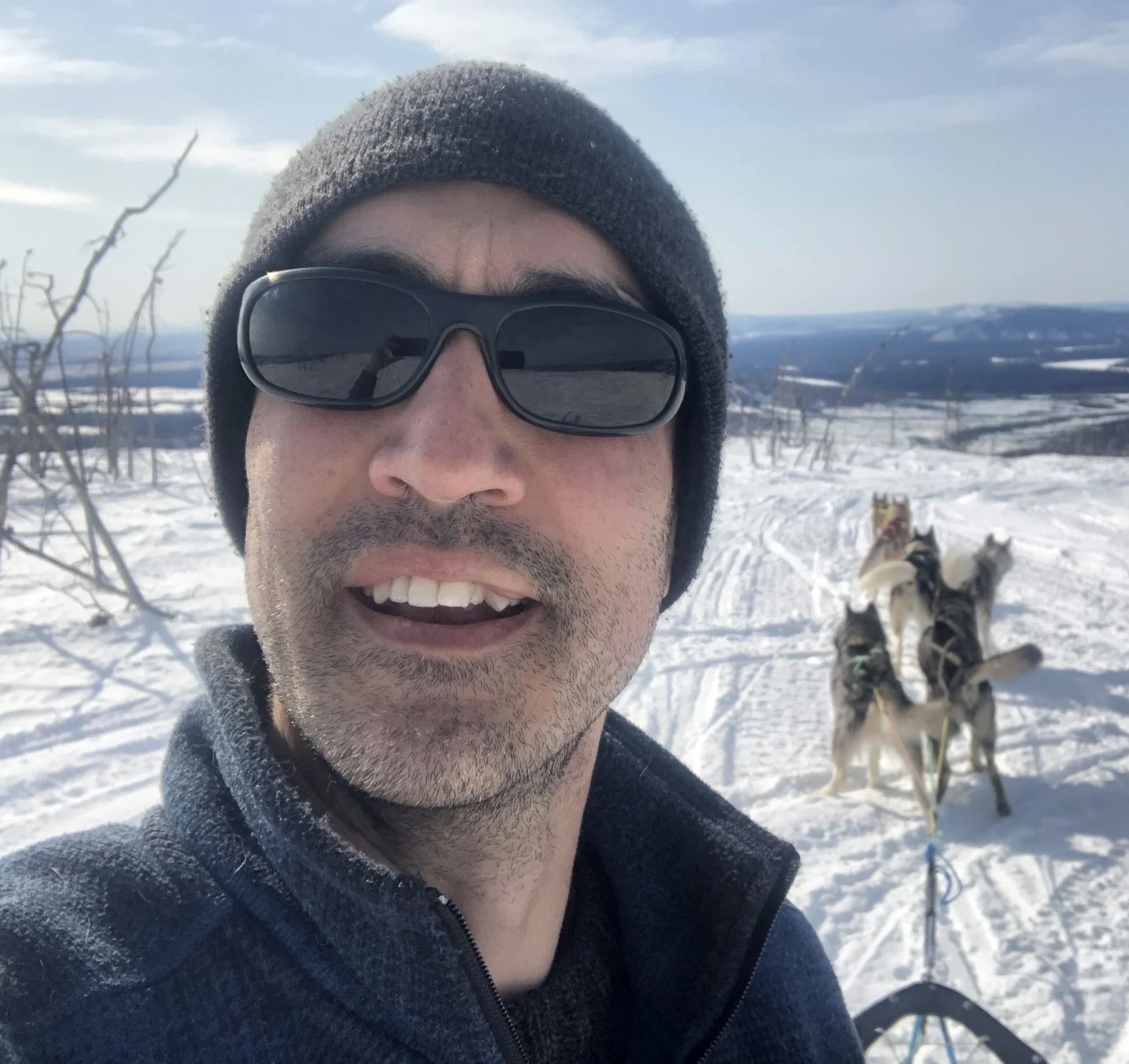 Growing up in McGrath, Kevin Whitworth learned from his elders to love the land, the river, and the natural world from an early age. He spent many hours exploring, hunting, fishing, and trapping out in the woods and on the rivers. Through high school and college, Kevin spent his summers working as a biological technician at several wildlife refuges across the state. After graduating from University of Alaska Fairbanks, he worked a number of full-time positions for U.S. Fish and Wildlife Service, including Deputy Refuge Manager for the Innoko National Wildlife Refuge in McGrath. Kevin has also worked for the Alaska Department of Natural Resources, and as the Lands and Natural Resources Manager for MTNT Limited, the McGrath village corporation. While working for the Alaska Maritime National Wildlife Refuge, Kevin met his wife, Dara who also worked for the refuge. They have a young son and two daughters and enjoy spending time at their remote cabin, dogsledding with their team of dogs, and being outside as much as possible. He joined Kuskokwim River Inter-Tribal Fish Commission team in May 2018 and has served as Executive Director since 2022.
Growing up in McGrath, Kevin Whitworth learned from his elders to love the land, the river, and the natural world from an early age. He spent many hours exploring, hunting, fishing, and trapping out in the woods and on the rivers. Through high school and college, Kevin spent his summers working as a biological technician at several wildlife refuges across the state. After graduating from University of Alaska Fairbanks, he worked a number of full-time positions for U.S. Fish and Wildlife Service, including Deputy Refuge Manager for the Innoko National Wildlife Refuge in McGrath. Kevin has also worked for the Alaska Department of Natural Resources, and as the Lands and Natural Resources Manager for MTNT Limited, the McGrath village corporation. While working for the Alaska Maritime National Wildlife Refuge, Kevin met his wife, Dara who also worked for the refuge. They have a young son and two daughters and enjoy spending time at their remote cabin, dogsledding with their team of dogs, and being outside as much as possible. He joined Kuskokwim River Inter-Tribal Fish Commission team in May 2018 and has served as Executive Director since 2022.
Spencer Rearden grew up in rural Alaska, where wide open spaces, vast public lands, and a deep connection to the environment shaped his passion for conservation and science. Spencer was raised in a subsistence lifestyle centered on fishing, berry picking, and hunting — traditions that continue to influence both his personal and professional life. Spencer earned his Bachelor’s degree in Fisheries and Wildlife and a Master’s degree in Wildlife Science from Oregon State University. He started his career with the U.S. Fish and Wildlife Service (USFWS) as a Wildlife Biologist with the Office of Subsistence Management, where he became well-versed in the Federal subsistence regulatory process and Title VIII of ANILCA. Through this work, he helped develop and justify regulatory changes to conserve fish and wildlife resources while supporting rural and Native subsistence users. Over the past 20 years, Spencer has worked in both private and government positions, primarily in Alaska. 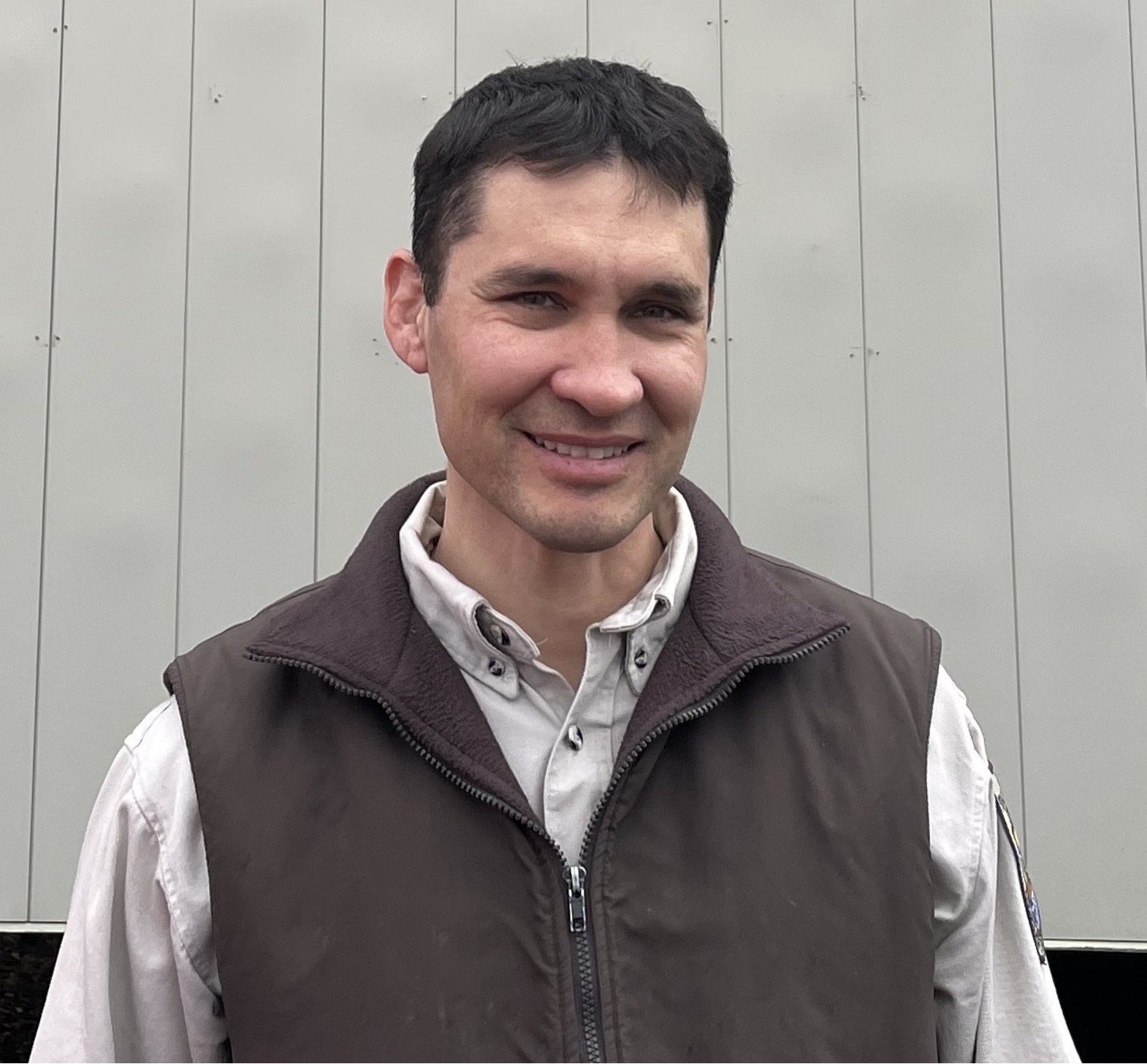
At the Yukon Delta National Wildlife Refuge, he has held several roles, including Big Game Biologist, Assistant Refuge Manager, Supervisory Wildlife Biologist, and Refuge Manager since 2023. Spencer’s education, professional expertise, and firsthand understanding of Alaska’s subsistence traditions have helped him build strong partnerships with local and Native communities to advance conservation goals. He remains dedicated to ensuring that subsistence practices, and the cultural values they represent, endure for future generations.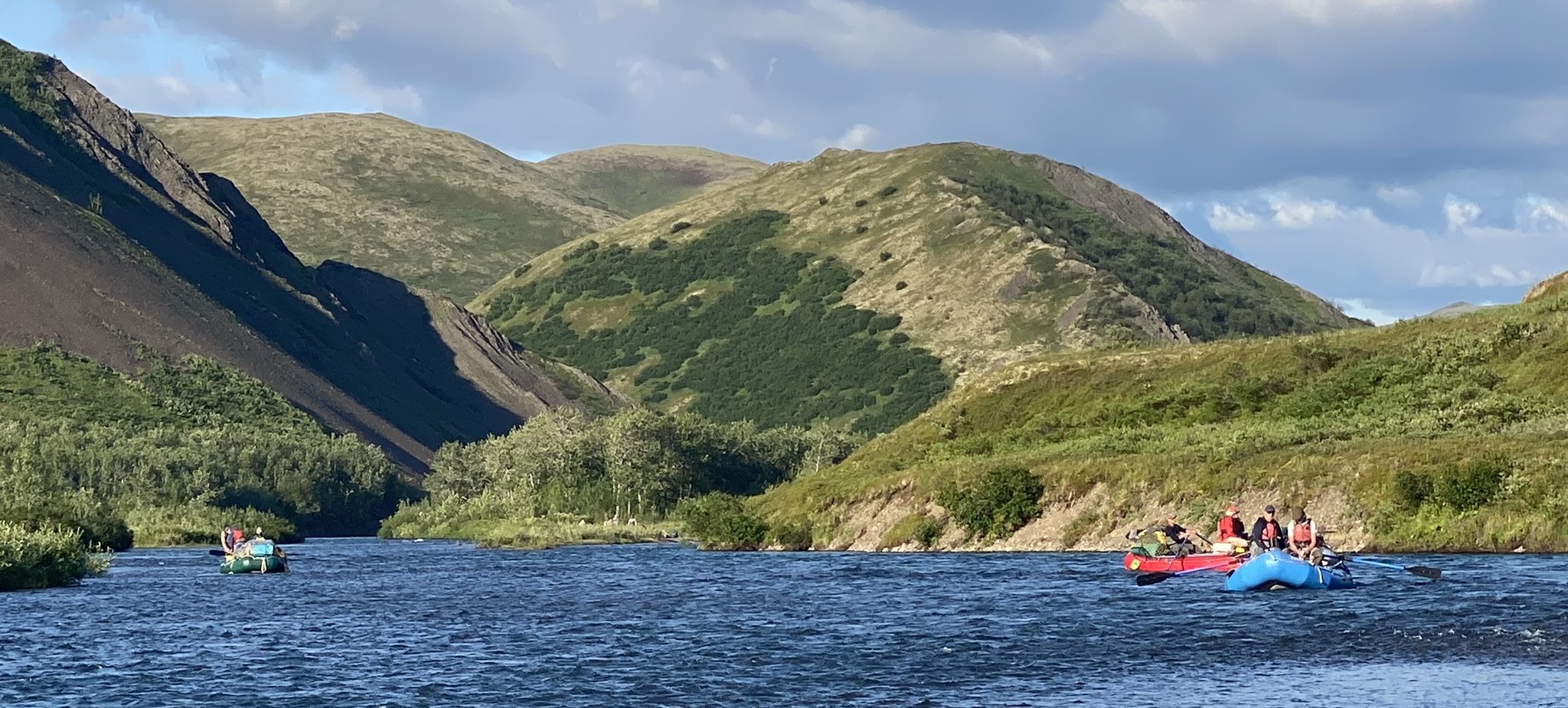
The Kisaralik River, an important tributary to the Kuskokwim, was the scene of the Friends Discovery trip to the Yukon Delta National Wildlife Refuge in 2024. Anecdotally, we noted sharply decreased numbers of Dolly Vardin and rainbow trout compared to a decade ago. Trout and Dolly Vardin are predators on salmon eggs so likely their populations are affected by the salmon collapse. PC Poppy Benson/Friends
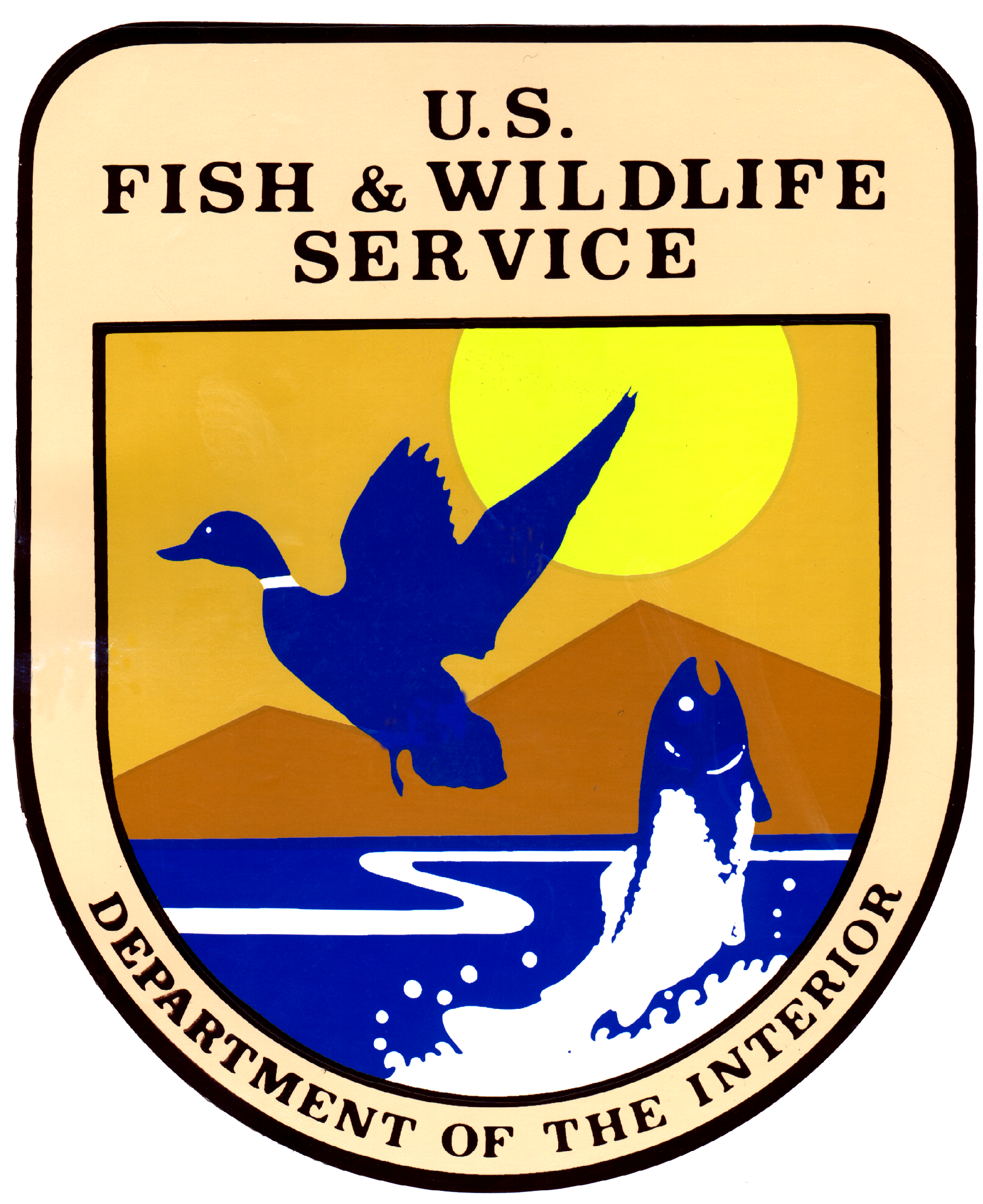
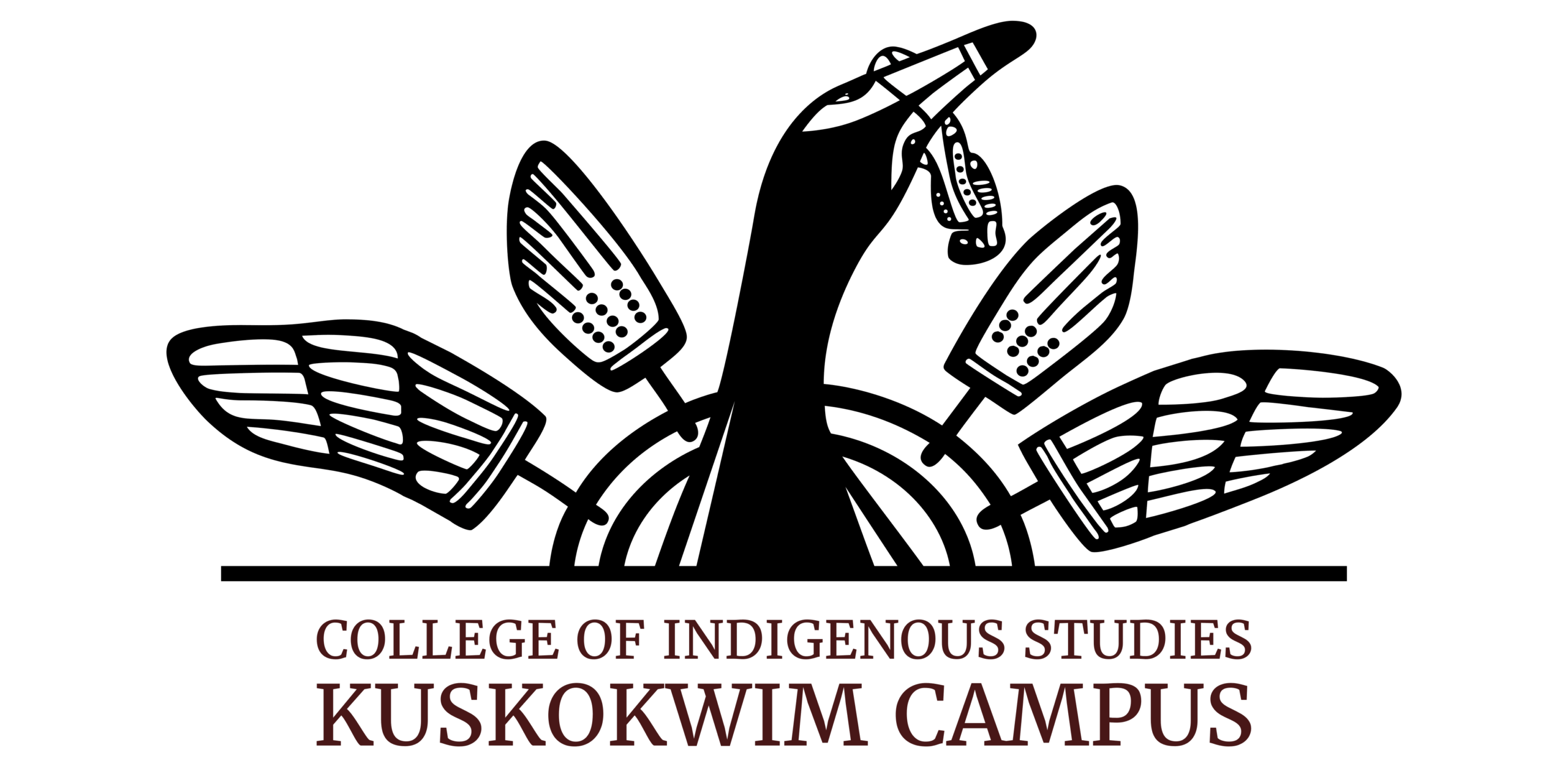


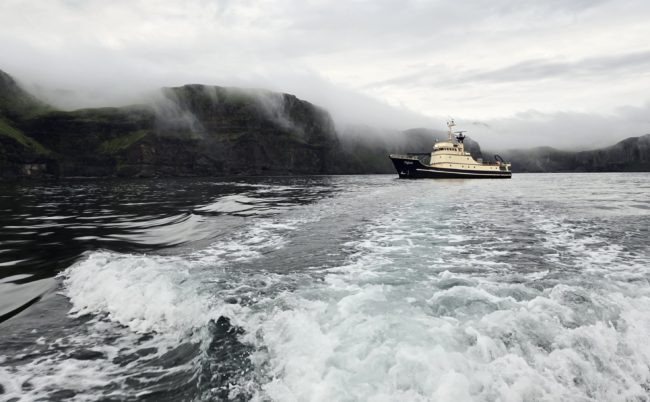

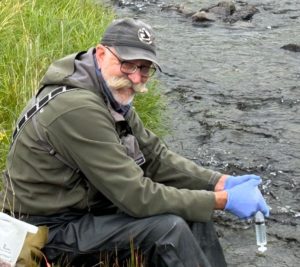 Mark Conrad was recently “retired” from a 30+ year career in conservation in Wyoming, researching and protecting water quality and wildlife habitat when he felt the call to check out Alaska in 2021. He eventually settled in Homer, throwing himself into volunteer work with the Alaska Maritime National Wildlife Refuge and other birding and conservation groups. He monitors sea duck and shorebirds, works seasonally as a bear guard and with Friends has built rat traps and swallow boxes and participated in cleanups. His Wyoming background in water quality and invasive weeds made him well suited for this volunteer opportunity. Mark’s bachelor’s degree is from University of California Davis and his master’s from University of Wyoming. Mark enjoys travelling, hunting, fishing, kayaking, xc skiing, birding, and learning about the maritime environment. Mark said he really enjoys the community of Homer and the whole state. He is glad he made the move.
Mark Conrad was recently “retired” from a 30+ year career in conservation in Wyoming, researching and protecting water quality and wildlife habitat when he felt the call to check out Alaska in 2021. He eventually settled in Homer, throwing himself into volunteer work with the Alaska Maritime National Wildlife Refuge and other birding and conservation groups. He monitors sea duck and shorebirds, works seasonally as a bear guard and with Friends has built rat traps and swallow boxes and participated in cleanups. His Wyoming background in water quality and invasive weeds made him well suited for this volunteer opportunity. Mark’s bachelor’s degree is from University of California Davis and his master’s from University of Wyoming. Mark enjoys travelling, hunting, fishing, kayaking, xc skiing, birding, and learning about the maritime environment. Mark said he really enjoys the community of Homer and the whole state. He is glad he made the move.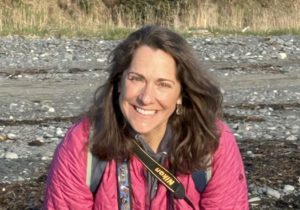 Deb Kurtz first came to Alaska on the ferry in 1999 for a summer of hitchhiking around the state to backpack and hike. Two years later she returned for a seasonal job as a wilderness technician for the US Forest Service in southeast Alaska. For the next 20 plus years she worked for the Forest Service, the Park Service, non-profits and the private sector doing marine bird and mammal surveys, invasive plant management, time lapse photography, snow surveys, glacier monitoring, oceanographic measurements, watershed management, fisheries surveys, and waterfowl banding. Deb has been a Friends member for a few years, but it was her recent retirement that allowed her to take on a longer-term volunteer project like this. Deb earned a bachelor’s in geography with minors in geology and environmental sciences from SUNY Geneseo and a master’s in earth science with a thesis on invasive plant modeling from Montana State. Deb loves Alaska’s wildlands and wildlife and can be found recreating and exploring across the state’s mountains, rivers, coast, and tundra with a pair of binoculars and a camera around her neck. She lives in Anchorage.
Deb Kurtz first came to Alaska on the ferry in 1999 for a summer of hitchhiking around the state to backpack and hike. Two years later she returned for a seasonal job as a wilderness technician for the US Forest Service in southeast Alaska. For the next 20 plus years she worked for the Forest Service, the Park Service, non-profits and the private sector doing marine bird and mammal surveys, invasive plant management, time lapse photography, snow surveys, glacier monitoring, oceanographic measurements, watershed management, fisheries surveys, and waterfowl banding. Deb has been a Friends member for a few years, but it was her recent retirement that allowed her to take on a longer-term volunteer project like this. Deb earned a bachelor’s in geography with minors in geology and environmental sciences from SUNY Geneseo and a master’s in earth science with a thesis on invasive plant modeling from Montana State. Deb loves Alaska’s wildlands and wildlife and can be found recreating and exploring across the state’s mountains, rivers, coast, and tundra with a pair of binoculars and a camera around her neck. She lives in Anchorage.  Dan Esler’s parents called his bachelor’s degree from Northland College in outdoor recreation and biology “Camping for Credit.” Dan went on to get a master’s from Texas A & M with his thesis on hydrilla, an invasive water plant, and a PhD from Oregon State. He first came to Alaska for a three-month technician job with breeding waterfowl on the Yukon Flats National Wildlife Refuge and stayed. Most of his career was with USGS as a wildlife research biologist with an interest and expertise in nearshore marine ecology and birds, especially sea ducks. He also spent 12 years on the faculty of Simon Fraser University in Canada as a researcher. His work and outdoor adventures, often centered around birding, have taken him to many of Alaska’s national wildlife refuges including Yukon Delta, Yukon Flats, Kodiak, Kenai, Alaska Maritime, Izembek, and Tetlin refuges. Dan notes that Tetlin Refuge is a favorite spring spot for spotting species hard to see elsewhere in Alaska like Sora, Ruddy Duck and Common Yellowthroat. Dan lives in Anchorage and enjoys all sorts of outdoorsy and naturey activities.
Dan Esler’s parents called his bachelor’s degree from Northland College in outdoor recreation and biology “Camping for Credit.” Dan went on to get a master’s from Texas A & M with his thesis on hydrilla, an invasive water plant, and a PhD from Oregon State. He first came to Alaska for a three-month technician job with breeding waterfowl on the Yukon Flats National Wildlife Refuge and stayed. Most of his career was with USGS as a wildlife research biologist with an interest and expertise in nearshore marine ecology and birds, especially sea ducks. He also spent 12 years on the faculty of Simon Fraser University in Canada as a researcher. His work and outdoor adventures, often centered around birding, have taken him to many of Alaska’s national wildlife refuges including Yukon Delta, Yukon Flats, Kodiak, Kenai, Alaska Maritime, Izembek, and Tetlin refuges. Dan notes that Tetlin Refuge is a favorite spring spot for spotting species hard to see elsewhere in Alaska like Sora, Ruddy Duck and Common Yellowthroat. Dan lives in Anchorage and enjoys all sorts of outdoorsy and naturey activities.
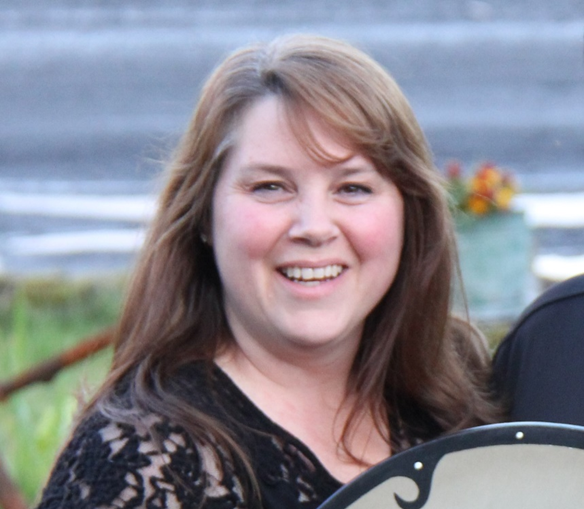
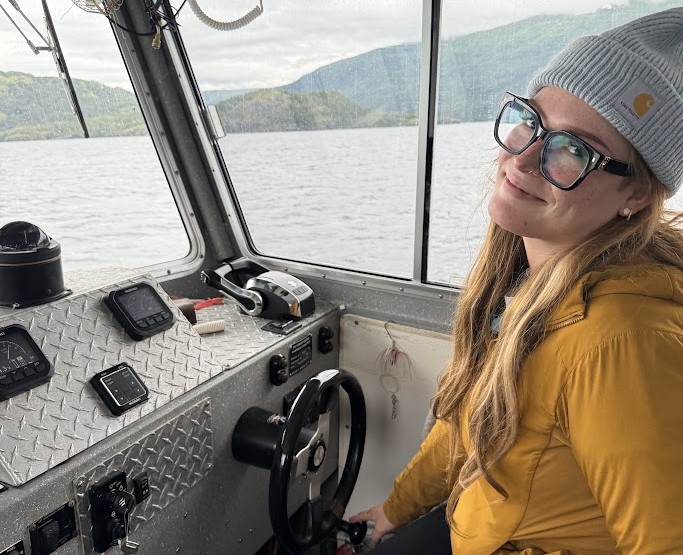


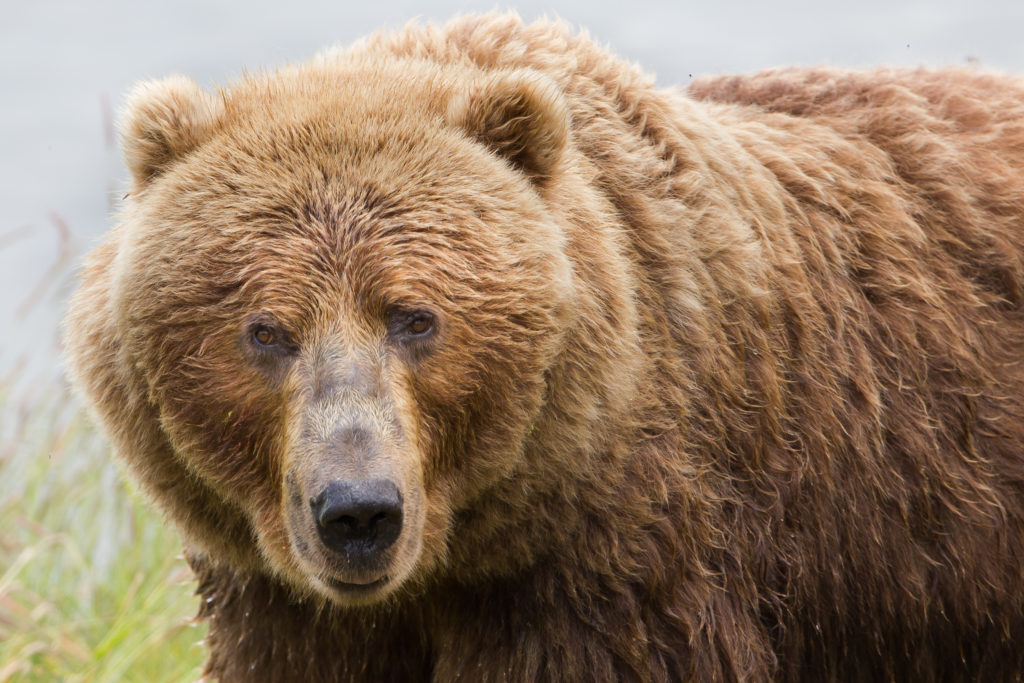


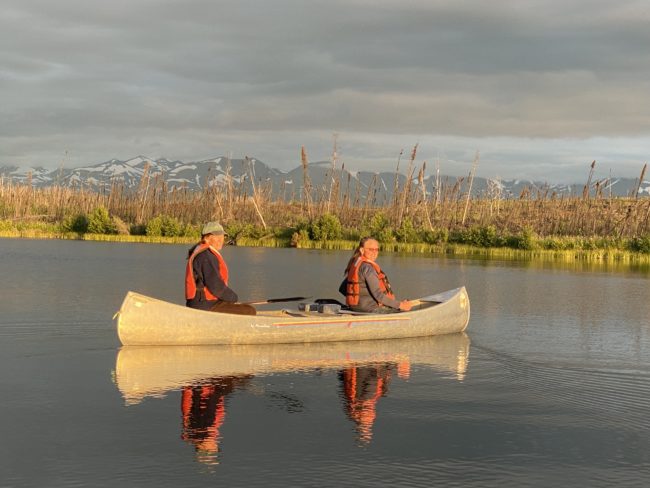
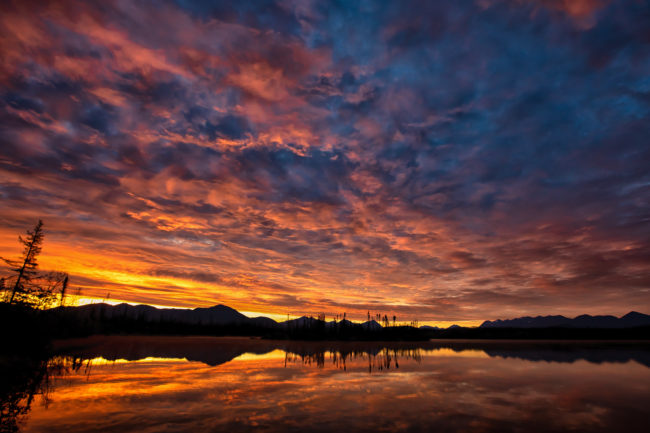

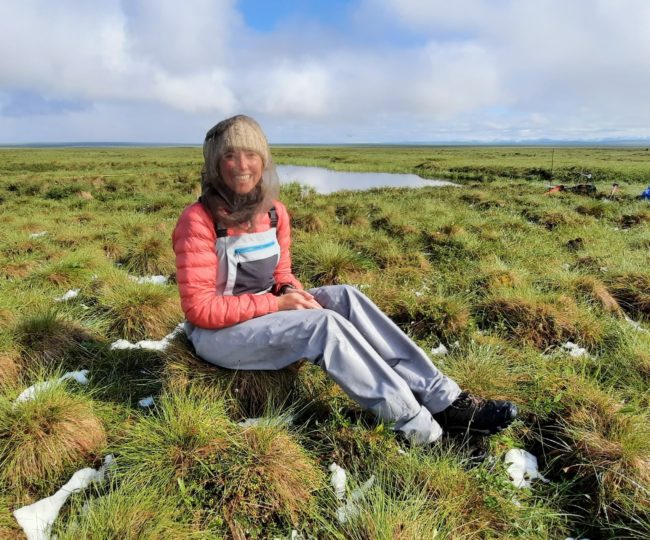
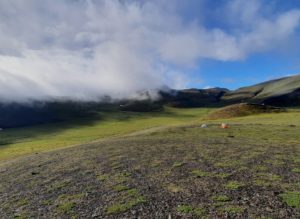
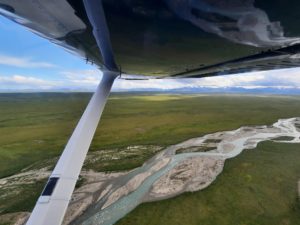
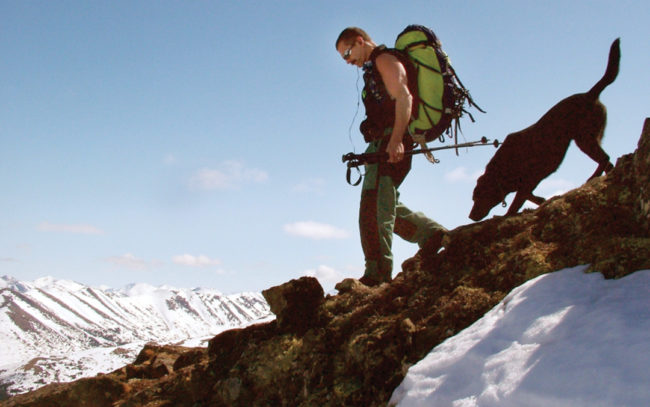


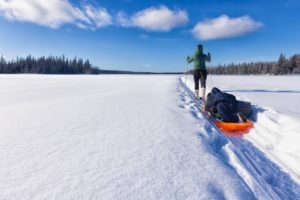
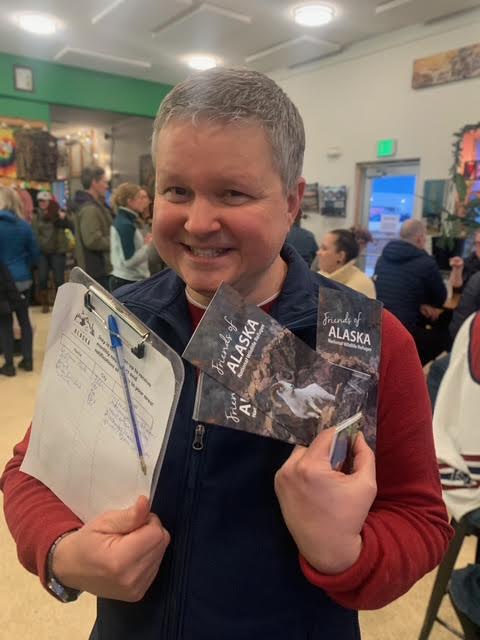
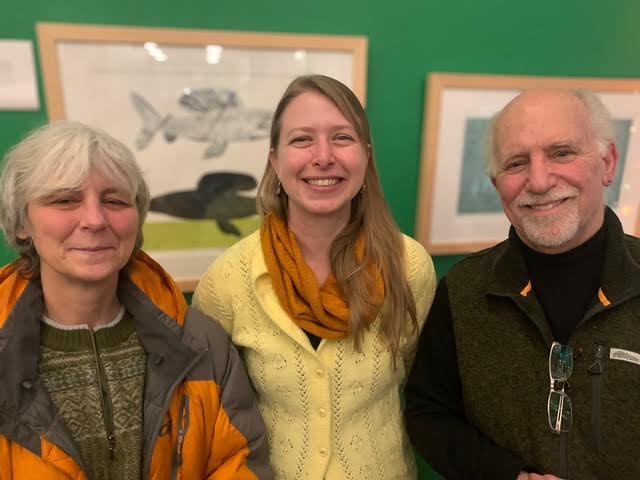
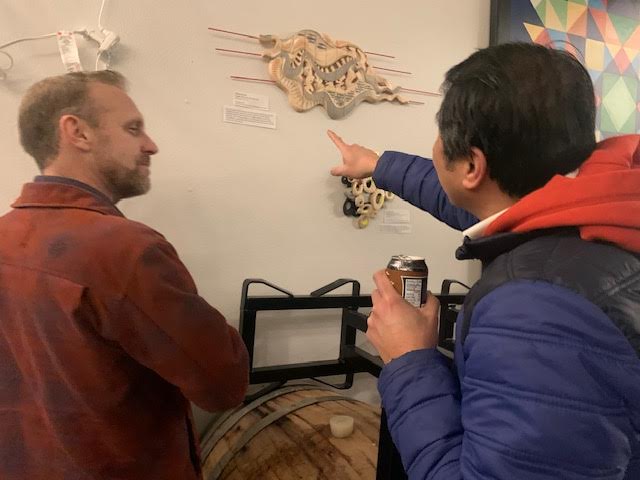

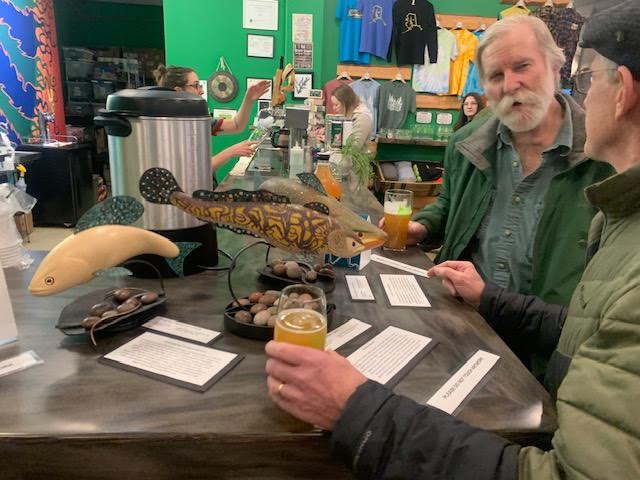
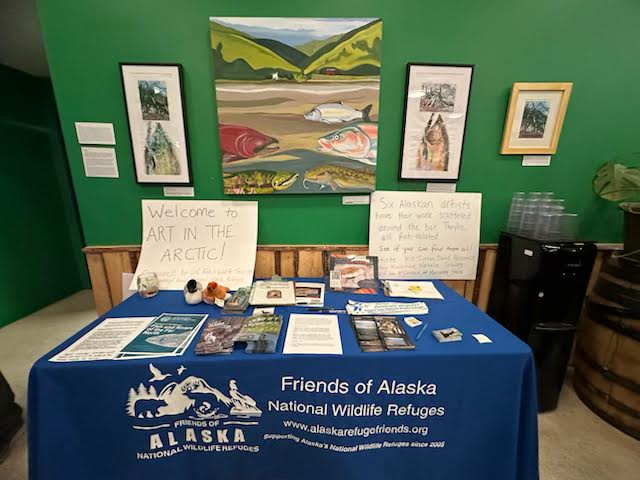
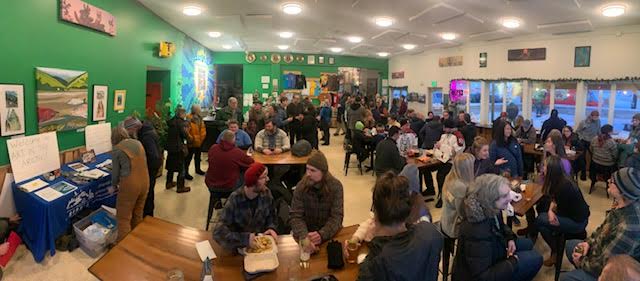

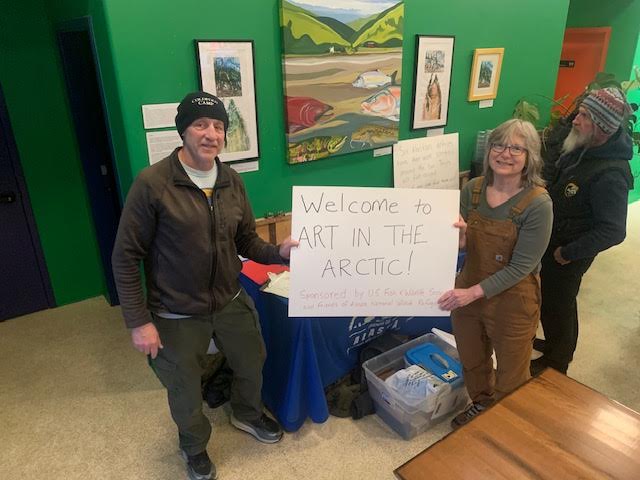

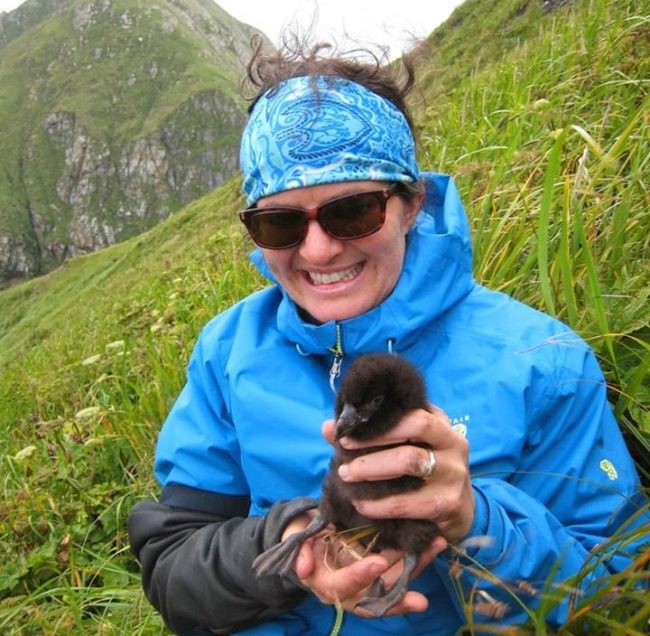
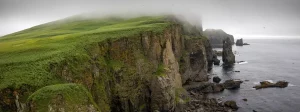
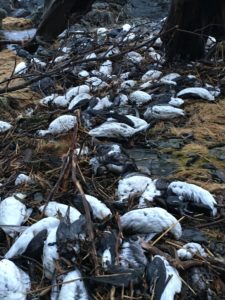 When birds die at sea, only a small percentage of the carcasses washes up on shore. What did it really mean in terms of total bird death that 62,000 carcasses were recovered up and down the coast from California to the Bering Sea? Breeding colony counts were needed to give a clearer picture. Unfortunately, for a few years after the die-off, murres didn’t breed successfully, so biologists couldn’t be sure how many had died and how many just weren’t returning to the colonies to breed. When breeding returned to “normal”, biologists learned the true scope of the die-off. Heather is one of six coauthors of a
When birds die at sea, only a small percentage of the carcasses washes up on shore. What did it really mean in terms of total bird death that 62,000 carcasses were recovered up and down the coast from California to the Bering Sea? Breeding colony counts were needed to give a clearer picture. Unfortunately, for a few years after the die-off, murres didn’t breed successfully, so biologists couldn’t be sure how many had died and how many just weren’t returning to the colonies to breed. When breeding returned to “normal”, biologists learned the true scope of the die-off. Heather is one of six coauthors of a
